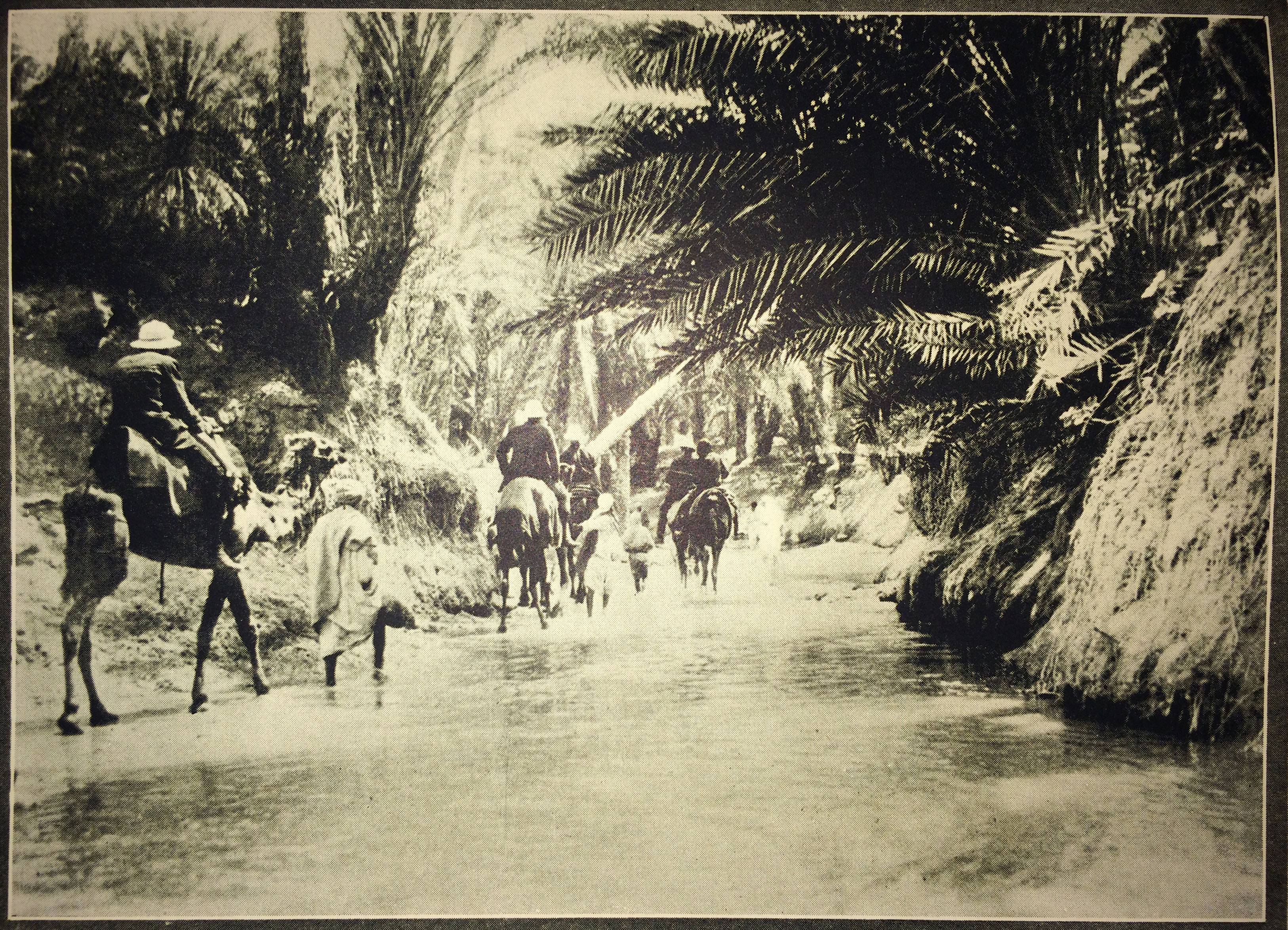This post was written by Tiffany Kajer Wright, research services assistant.
In the fourth installation of our blog series in conjunction with the Around the World in (Almost) 80 Days exhibit, we’re examining historical travel in Africa. At Special Collections Research Center, our Archives and Rare Books can bring the past to life and inspire future travel plans. Whether going on safari or seeking to understand other cultures and religions, travelling to Africa has been regarded with excitement and shrouded with mystery. From the Sahara to South Africa, travelers have recorded their thoughts, drawn maps, and photographed their way across the continent.
Always considered an exotic and wild place, Africa has captured the attention of Western cartographers and geographers going back to the Roman Empire. In the early 1700s, Herman Moll sought out the most well-traveled people of his time and constructed a book of maps and descriptions of lands and peoples. He called his compilation The Compleat Geographer. To the best of his ability, he included every bit of the known world, and Africa was no exception.

Moll, Herman, The Compleat Geographer, G114 .C74 1709, Special Collections Research Center, George Mason University.
The Sahara is the largest hot desert in the world stretches from the Atlantic Ocean to the Red Sea, and from the Mediterranean Sea to the Sahel. Travel is traditionally done by camel, and Bryon Khun de Prorok did exactly that in 1920. He and his entourage ventured into the desert, and he wrote about their adventures in Mysterious Sahara. Throughout the book are plates of his journey, including a stop at the Oasis of Nefta in Tunisia.

Khun de Prorok, Bryon, Mysterious Sahara, DT333 .K4, Special Collections Research Center, George Mason University.
Dr. John Paden, a Clarence Robinson Professor of International Studies, donated his papers and books upon retiring. He conducted academic research in Nigeria during the 1960s, and has extensive materials from that time. Among the books and papers, he also donated a musical instrument called a yomkwo and several Qur’an (Koran) boards. These are boards used to help students memorize verses from the holy book, as well as practice their handwriting.

John N. Paden, Collection C0194, Box 132, Qur’an/Koran board, Special Collections Research Center, George Mason University.

John N. Paden, Collection C0194, Box 132, Qur’an/Koran board, Special Collections Research Center, George Mason University.
The word “safari” comes from the Swahili for “journey” or “expedition,” and was likely adapted from the Arabic “safar,” meaning “to travel.” If one goes on safari, one goes to Africa to do so. Edith McChesney Ker did, and later donated slides of her photographs from Africa and around the world. Her collection spans from the 1950s to the early 2000s and is about 10,000 slides. She demonstrated an obvious preference for wildlife and nature shots on her global travels, including the wildlife of Kenya and Tanzania.

Edith McChesney Ker, Collection C0077, Box 28, Page 21, Slide 1, Special Collections Research Center, George Mason University.
In February 2016, Atlas Obscura posted a story about the honeyguide – an unassuming bird that led hunters to bees’ nests practically upon request in Tanzania. Over the summer, the story gained ground as other news outlets ran similarly-themed pieces. However, this bird’s behavior was recorded as far back as 1881! Near the village of Kavimba, in the country now called Botswana, Dr. David Livingstone encountered this amazing bird in his travels during the mid-1800s. J.E. Chambliss compiled this tale and many more of the doctor’s expeditions – alone and with Henry Stanley – in The Lives and Travels of Livingstone and Stanley.

Chambliss, J. E., The Lives and Travels of Livingstone and Stanley, DT1030 .C44 1881, Special Collections Research Center, George Mason University.
Follow SCRC on Social Media and look out for future posts on our Facebook, Instagram, and Twitter accounts. To search the collections held at Special Collections Research Center, go to our website and browse the finding aids by subject or title. You may also e-mail us at speccoll@gmu.edu or call 703-993-2220 if you would like to schedule an appointment, request materials, or if you have questions. Appointments are not necessary to request and view collections.

